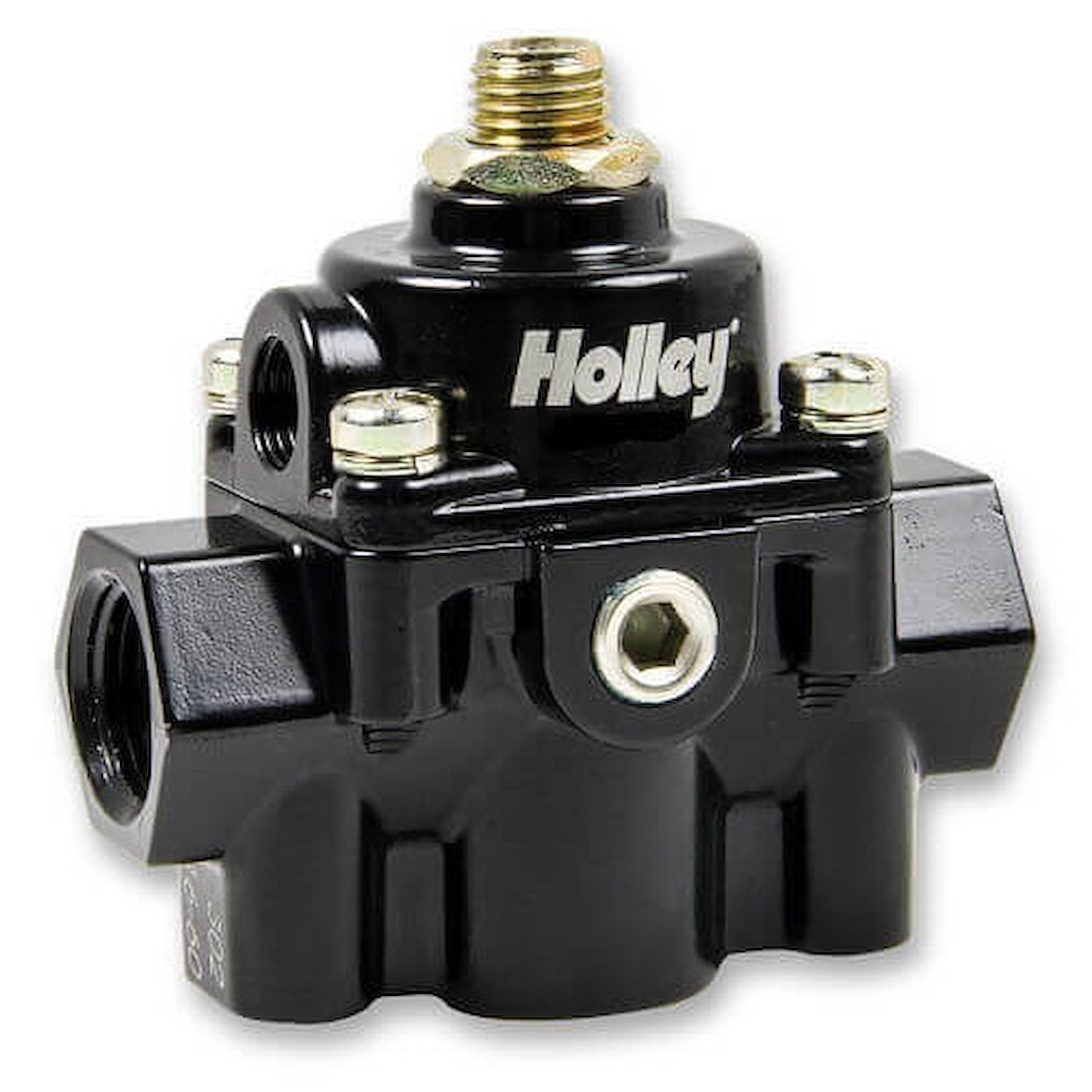Holley 12-887 Carbureted Fuel Pressure Regulator
510-12-887



Items You Need
| Ratings |
|---|
| Price |
| Brand |
Carbureted Fuel Pressure Regulators
Holley 12-887 Carbureted Fuel Pressure Regulator Features:
- Die-cast aluminum build for enhanced durability
- 3/8 in. NPT Inlet, Outlet, and Return ports
- 1/8 in. NPT Gauge Port
- 1/8 in. NPT Boost Reference – 1:1
Specifications:
I got this regulator with some other grab bag parts, can the return be plug off and simply run this regulator on the pressure side of fuel line between pump and carb?
What’s the max or operating inlet pressure? I’m needing a higher psi pump and sticking with carb and trying to run 6-8lbs of boost. Basically Che king to see if I can run this w a walboro 255,340 or similar.
Does this regulator come in a big port
What's the pressure range on this item?
Will this work for Tbi to carb conversion
Will this fit on the Jegs 555-15281 mount bracket? Thanks, Bill
Motor Vehicles
WARNING: Motor vehicles contain fuel, oils and fluids, battery posts, terminals and related accessories which contain lead and lead compounds and other chemicals known to the State of California to cause cancer, birth defects and other reproductive harm. These chemicals are found in vehicles, vehicle parts and accessories, both new and as replacements. When being serviced, these vehicles generate used oil, waste fluids, grease, fumes and particulates, all known to the State of California to cause cancer, birth defects, and reproductive harm.
Tools:
WARNING: Some dust created by power sanding, sawing, grinding, drilling, and other construction activities contains chemicals known to the State of California to cause cancer and birth defects or other reproductive harm. Some examples of these chemicals are: lead from lead-based paints, crystalline silica from bricks and cement and other masonry products, and arsenic and chromium from chemically treated lumber. Your risk from exposure to these chemicals varies, depending on how often you do this type of work. To reduce your exposure, work in a well-ventilated area and with approved safety equipment, such as dust masks that are specially designed to filter out microscopic particles.
Electrical Cords
WARNING: The wires of these products contain chemicals known to the State of California to cause cancer and birth defects or other reproductive harm. Wash hands after handling.

